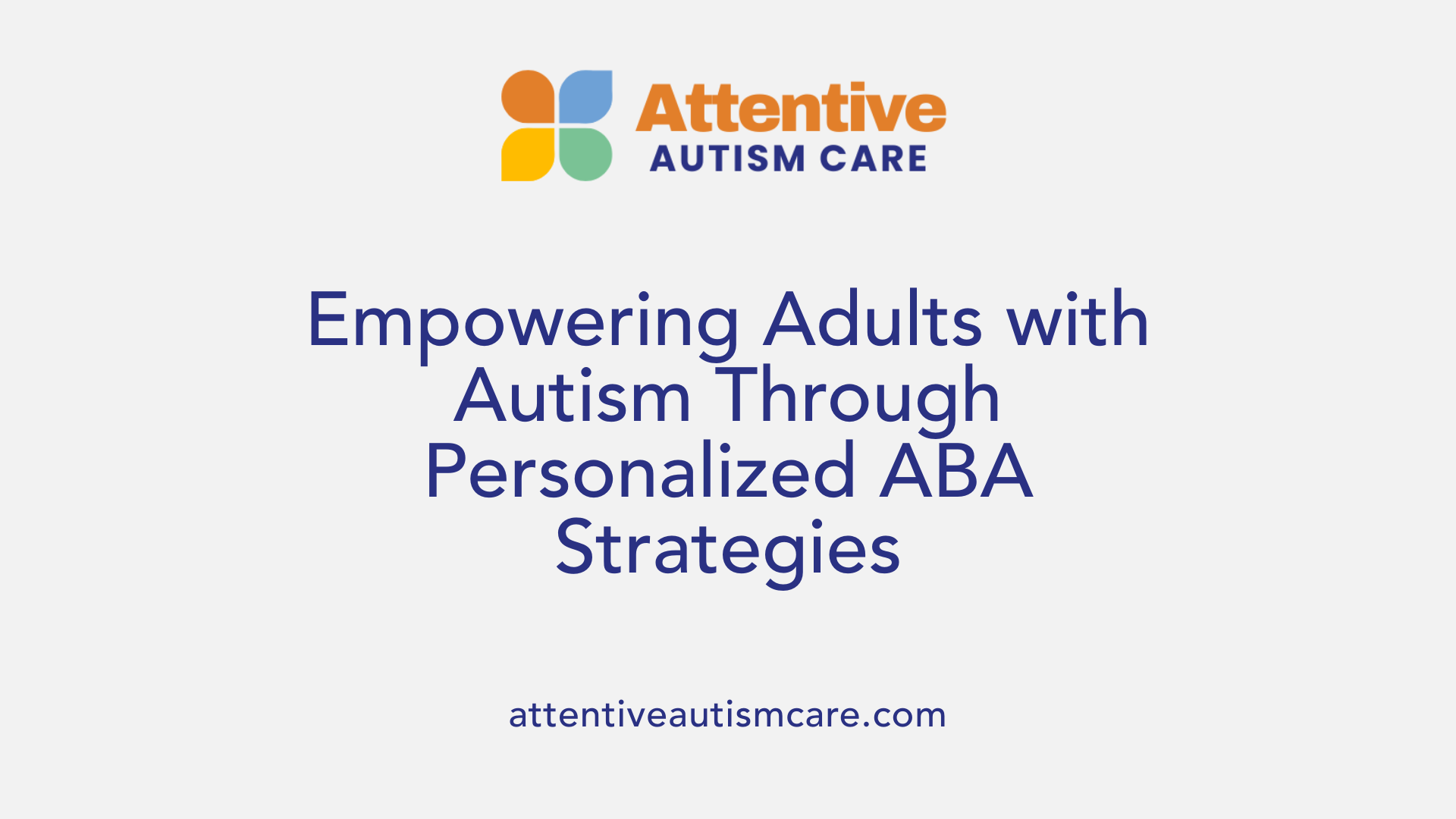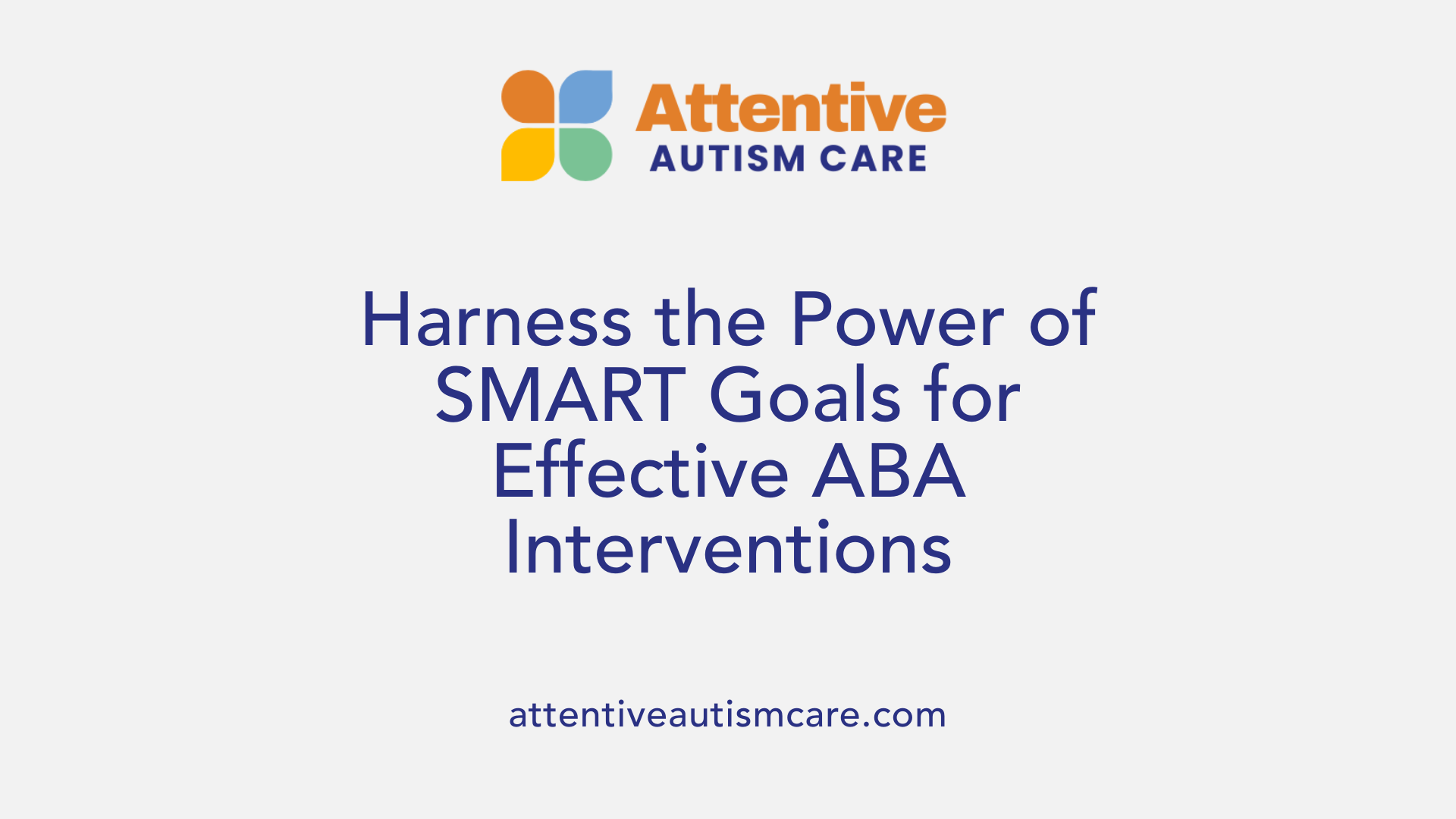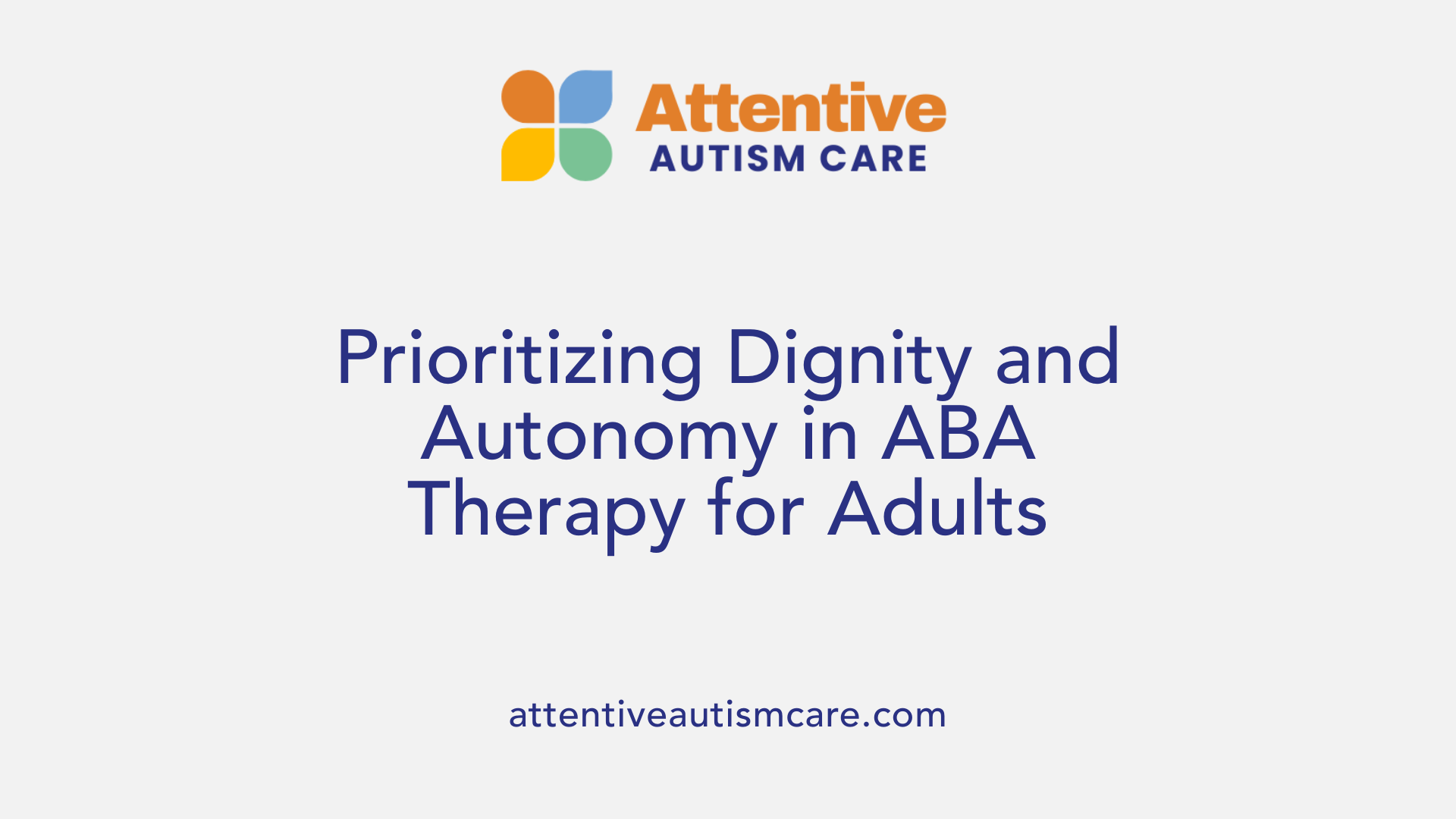Supporting Autistic Adults in Developing Life Coaching Skills
Enabling Independence: Life Coaching for Autistic Adults Through ABA

Empowering Autistic Adults with Life Skills Coaching
As adults with autism spectrum disorder seek greater independence and fuller participation in their communities, personalized support through evidence-based practices becomes essential. Applied Behavior Analysis (ABA) therapy, a scientifically grounded behavioral intervention, has grown beyond its origins to help autistic adults develop vital life coaching skills. This article explores how ABA supports adults with autism in acquiring practical skills for daily living, social engagement, and employment, enriching their quality of life and autonomy.
Understanding Applied Behavior Analysis (ABA) Therapy
What is Applied Behavior Analysis (ABA) therapy?
Applied Behavior Analysis (ABA) therapy is a science-based approach centered on understanding how behavior interacts with the environment. It systematically uses learning principles to enhance beneficial behaviors like communication, social interactions, and daily living skills. At the same time, ABA aims to reduce harmful or problematic actions.
How does ABA use positive reinforcement and the ABC model?
A cornerstone of ABA is positive reinforcement, which involves providing preferred rewards after a desired behavior to encourage its recurrence. Another fundamental principle is the Antecedent-Behavior-Consequence (ABC) model. This framework helps analyze behavior by identifying what happens before (antecedent) and after (consequence) a behavior, allowing therapists to understand and modify behavior patterns effectively.
How are ABA programs individualized and professionally overseen?
ABA therapy is carefully tailored to each individual's unique needs. Treatment plans are crafted based on detailed assessments of skills and preferences. Certified professionals, typically Board-Certified Behavior Analysts (BCBAs), design, supervise, and regularly adjust these programs. Continuous data collection and review ensure that interventions meet goals and adapt as necessary.
What evidence supports the effectiveness of ABA therapy?
ABA is one of the most extensively researched behavioral therapies available. Numerous studies indicate that intensive and long-term ABA therapy can lead to meaningful improvements in intellectual functioning, language, social skills, and daily living abilities. Recognized by major authorities like the US Surgeon General and the American Psychological Association, ABA is an evidence-based practice benefiting individuals with autism and other developmental challenges across all ages.
How ABA Therapy Supports Adults with Autism

How Does ABA Therapy Help Individuals with Autism?
ABA therapy supports adults with autism by teaching essential skills that promote independence, communication, and social engagement. This approach uses personalized, evidence-based techniques grounded in behavioral science to encourage positive behaviors and reduce challenges.
Skill Development in Communication, Social, and Daily Living
Adults with autism benefit from ABA through targeted interventions focusing on communication skills, social interactions, and daily living activities. These may include learning how to navigate social situations, manage daily routines like cooking and managing finances, and improving expressive language to better communicate needs.
Personalized, Evidence-Based Interventions
Each ABA program is tailored to the individual's unique strengths and challenges. Therapists use structured teaching methods such as Discrete Trial Training (DTT) and natural environment teaching, applying positive reinforcement and prompting to strengthen new behaviors. This customization ensures meaningful progress aligned with the adult’s goals.
Data-Driven Monitoring
Progress in ABA therapy is carefully tracked through ongoing data collection and analysis. This allows for flexible adjustments to intervention plans, ensuring that strategies remain effective and responsive to the adult’s evolving skills and needs.
Reduction of Challenging Behaviors
ABA addresses behaviors that hinder learning or social participation by understanding their triggers and teaching alternative, functional skills. Techniques focus on decreasing problematic behaviors while fostering positive expression and emotional regulation.
Long-Term Improvements in Independence
Through consistent and systematic support, adults receiving ABA therapy show improvements in intellectual functioning, socialization, and adaptive skills. These gains contribute to greater independence in employment, community living, and relationships, enhancing overall quality of life.
| Aspect | ABA Approach | Impact on Adults with Autism |
|---|---|---|
| Communication Skills | Structured teaching, prompts, reinforcement | Improved expressive language and social communication |
| Social Skills | Role-playing, social norms training | Increased confidence and social engagement |
| Daily Living Skills | Task analysis, skill acquisition | Greater independence in routines such as cooking, finances |
| Behavior Management | Behavior reduction strategies, emotional regulation | Decreased challenging behaviors, improved self-control |
| Monitoring | Data collection and analysis | Responsive treatment adjustments for meaningful progress |
The Evolution and Expansion of ABA Services to Adults
How did ABA begin, and how has it evolved to serve adults?
Applied Behavior Analysis (ABA) originally developed as a therapeutic approach primarily for children with autism spectrum disorder (ASD). Early ABA programs focused on addressing learning and behavior challenges to promote skill acquisition in younger populations.
How has the scope broadened to include adults?
Over time, the success of ABA in children led to expanding services to adults with ASD. This expansion reflects growing recognition of the continuing support adults require to improve independence and quality of life.
What other adult populations benefit from ABA?
ABA's focus has further widened to assist adults with intellectual disabilities, acquired brain injuries, and mental health challenges such as anxiety and depression. By tailoring interventions, ABA addresses diverse needs beyond autism.
In which settings are ABA services provided for adults?
ABA services for adults are delivered in varied environments, including residential communities, workplace settings, and general community participation venues. This versatility ensures support is contextually relevant, enhancing generalization of skills and practical outcomes.
Through its evolution from child-centric to comprehensive adult services, ABA continues to adapt and expand, making significant impacts across multiple adult populations and life domains.
Setting Practical Goals: The SMART Framework in ABA

How is person-centered goal setting used in adult ABA?
Person-centered goal setting is fundamental in adult ABA therapy. This method ensures that goals align closely with the individual's preferences, needs, and life circumstances. Adults actively participate in developing their treatment objectives, promoting autonomy and motivation. This collaborative approach fosters meaningful outcomes that reflect the person's unique values and ambitions.
What does the SMART framework entail in ABA goal setting?
ABA professionals apply the SMART framework to design effective goals:
- Specific: Clear and detailed objectives targeting particular skills or behaviors.
- Measurable: Goals that allow progress tracking through quantifiable indicators.
- Achievable: Realistic targets considering the individual's current capabilities.
- Relevant: Objectives aligned with meaningful life areas.
- Time-bound: Defined timelines to evaluate progress and maintain focus.
This structure helps in creating focused, attainable, and time-sensitive goals tailored to each adult's circumstances.
What practical areas do ABA goals typically target?
Goals in adult ABA often focus on enhancing practical real-world skills such as:
- Employment readiness and job performance.
- Independent living skills, including managing finances, cooking, and transportation navigation.
- Building and strengthening social connections for a fulfilling community life. These areas support adults in achieving greater self-sufficiency and quality of life.
How are clients involved in goal development?
Adults receiving ABA therapies actively engage in the goal-setting process. Their input ensures that the goals are personally significant, promoting greater engagement and successful outcomes. Collaborative discussions between the client and the ABA team tailor interventions to reflect individual aspirations and priorities, making the therapy person-centered and respectful of autonomy.
Assessment Strategies Tailored for Adults
Interview and Observation Methods
Assessment in adult ABA therapy begins with thorough interviews and direct observations. These approaches gather detailed information on the individual's everyday behaviors, preferences, and challenges. Interviews often involve the adult themselves, family members, and caregivers to capture a comprehensive perspective. Observations in natural settings help identify how behaviors occur and the context influencing them.
Use of Standardized Tools like Vineland-3 and Adaptive Behavior Assessment System
To complement qualitative data, standardized assessments such as the Vineland Adaptive Behavior Scales, Third Edition (Vineland-3), and the Adaptive Behavior Assessment System (ABAS) are used. These tools provide structured measures of adaptive functioning in communication, daily living skills, and socialization. The scores help quantify the individual's strengths and areas requiring support, guiding evidence-based decisions.
Person-Centered Planning to Identify Strengths and Needs
A core aspect of adult ABA evaluation is person-centered planning. This process prioritizes the adult's input, respecting their autonomy and preferences. It aims to identify meaningful goals tied to their values, fostering motivation and engagement. By focusing on what the individual wants to achieve, assessments become more relevant and empowering.
Informing Individualized Programming
The gathered assessment data inform the development of tailored intervention plans. Individualized goals are crafted based on specific strengths and needs identified, supporting real-world outcomes like independent living, social connection, and employment. This ensures that ABA therapy for adults is personalized, practical, and aligned with their life aspirations.
Core ABA Techniques for Life Coaching Skills
What are common techniques used in ABA therapy?
Applied Behavior Analysis (ABA) therapy utilizes a variety of methods designed to teach new skills and encourage positive behaviors while reducing unwanted ones. A foundational technique is positive reinforcement, where desirable behaviors are rewarded to increase their frequency. This often works hand-in-hand with behavior shaping, gradually refining behaviors toward a target skill.
Another widely used approach is Discrete Trial Training (DTT), which breaks skills into smaller, teachable segments presented in a structured, repetitive manner. This method helps adults learn complex skills step-by-step.
To guide skill acquisition, ABA employs prompting, where cues or assistance are given to encourage correct responses, paired with fading, a gradual removal of prompts so the individual gains independence. Behavior chaining links individual behaviors together, allowing adults to perform multi-step tasks, such as preparing a meal or managing finances.
When addressing challenging behaviors, strategies like extinction (ignoring undesired behavior), redirection (guiding attention to more appropriate actions), and behavior contracts (agreements that outline expected behaviors and rewards) are implemented to promote behavioral improvements.
ABA also incorporates visual supports such as picture schedules, social stories, and modeling demonstrations. These tools improve comprehension and memory, especially for individuals who benefit from concrete, visual information.
A specialized intervention within ABA is Social Skills Training (SST), which involves role-playing, video modeling, and structured practice to teach skills such as conversation, friendship-building, and problem solving. SST enhances social competence and confidence, supporting better relationships and community participation.
These techniques are highly individualized, combined based on assessments, and continuously adjusted with careful data collection to maximize effectiveness in adult life coaching and skill-building contexts.
Incorporating Social Skills Training in Adult Life Coaching

What is the Role of Social Skills Training (SST) in Addressing Social Deficits?
Social Skills Training (SST) plays a critical role in helping adults with social deficits, particularly those on the autism spectrum, improve their social interactions, build confidence, and gain independence. SST targets essential skills such as conversation abilities, friendship-building, and problem-solving, which are vital for effective communication and social engagement in everyday adult life.
How Do Face-to-Face SST and Behavioral Intervention Technologies (BITs) Compare?
Traditionally, face-to-face (F2F) SST has been the primary method, offering direct, in-person instruction to build social competence. Recently, Behavioral Intervention Technologies (BITs)—including computer-based programs, avatars, and therapeutic robots—have emerged as effective alternatives or complements to traditional SST.
Both F2F SST and BITs SST demonstrate strong results in developing social skills. Meta-analyses reveal medium to high effect sizes for both approaches (F2F = 0.81, BITs = 0.93), showing significant improvements over no-treatment groups. Notably, no substantial difference in effectiveness has been observed between the two methods.
What Are the Benefits of Technology-Based Social Skills Programs?
Technology-based programs provide increased accessibility, reduce costs, and overcome barriers such as scheduling conflicts and transportation issues. They are particularly valuable amid provider shortages and challenges posed by events like the COVID-19 pandemic, extending the reach of effective social skills training to a broader adult population.
How Are Social Skills Improvements Assessed?
Parent-report tools such as the Social Responsiveness Scale (SRS), Social Skills Rating System (SSRS), and Social Skills Improvement System (SSIS) are common measures to evaluate the progress of social skills development. These assessments help track improvements and guide personalized adjustments in training.
What Are the Benefits of SST in Building Social Confidence and Independence?
By improving conversational abilities and social understanding, SST supports adults in gaining greater social confidence and independence. These skills empower individuals to better navigate employment, community interactions, and personal relationships, promoting a higher quality of life and more fulfilling social experiences.
ABA in Workplace Integration and Vocational Support
How does job coaching and task analysis support adults in employment?
Job coaching and task analysis are central ABA techniques in workplace integration for adults, especially those with autism spectrum disorder (ASD). Job coaching provides personalized support by breaking down job responsibilities into manageable steps. Task analysis decomposes complex tasks into smaller, teachable components, which are then systematically taught and practiced. This approach helps adults learn job duties efficiently and build confidence in their roles.
What are effective skill-building strategies for employment success?
Skill-building under ABA focuses on developing both technical and soft skills essential for employment. These include:
- Time management and punctuality
- Managing finances
- Communication and social skills specific to the workplace
- Problem-solving and task completion Through structured learning and positive reinforcement, adults acquire competencies that enhance their job performance.
How do environmental modifications and sensory accommodations improve work experiences?
ABA encourages creating supportive and adaptable environments tailored to individual sensory and learning needs. Examples include:
- Quiet workspaces to reduce sensory overload
- Visual supports like schedules and checklists
- Flexible break times to manage stress Such modifications help minimize distractions, reduce anxiety, and promote sustained focus.
In what ways does ABA enhance social interactions and self-advocacy at work?
ABA interventions train adults to navigate social dynamics through role-playing, social stories, and reinforcement of positive interaction skills. Additionally, self-advocacy is cultivated by teaching individuals to express needs and seek accommodations confidently, empowering them to maintain well-being and productivity on the job.
Can ABA increase employment rates among adults with disabilities?
Yes. By providing tailored skill development, environmental adjustments, and continuous support, ABA interventions have the potential to boost employment rates among adults with ASD and other disabilities. Through improved job readiness and workplace success, individuals experience greater independence and community inclusion.
Supporting Independent Living Through ABA
How Does ABA Promote Skill Acquisition for Independent Living?
ABA focuses on teaching practical skills adults need to live independently. These include managing finances, cooking, and navigating transportation systems. For example, adults may learn how to budget money, prepare meals safely, and use public transit effectively. These skills are taught step-by-step using techniques like task analysis and positive reinforcement to encourage mastery.
What Daily Living Skills Can ABA Help Enhance?
ABA supports improvement in various daily living activities that are essential for independence. These may cover personal hygiene, household maintenance, and time management. By breaking down activities into manageable steps and practicing them regularly, adults gain confidence and competence in their daily routines.
How Does ABA Facilitate Community Participation and Adaptive Functioning?
By addressing behaviors and skills needed for social interactions and community involvement, ABA helps adults participate meaningfully in their communities. This includes developing social skills, safety awareness, and problem-solving abilities in real-world settings, which enhances overall adaptive functioning.
Why Is Teaching in Natural Environments Important for ABA Generalization?
ABA emphasizes learning skills in the natural environments where they will be used, such as at home or in the community. Teaching in these real-life contexts aids generalization, meaning individuals can apply skills across different situations and settings, leading to greater independence and improved quality of life.
Managing Co-occurring Mental Health Challenges with ABA
How does ABA address anxiety and depression in adults?
ABA adapts to meet the emotional needs of adults by specifically targeting co-occurring mental health issues such as anxiety and depression. Through individualized interventions, adults learn practical coping skills that reduce distress and improve daily functioning.
What emotional regulation and coping strategies are taught?
Techniques focus on teaching emotional regulation — the ability to recognize, manage, and express emotions appropriately. ABA uses data-driven methods to break down these skills into manageable parts for skill acquisition and generalization across settings.
How are cognitive and behavioral interventions integrated?
ABA often incorporates approaches like Cognitive Behavioral Therapy (CBT) to address negative thought patterns alongside behavioral techniques. This integration helps individuals identify and modify maladaptive beliefs while promoting positive behaviors and emotional resilience.
How does ABA enhance overall well-being alongside skill development?
Beyond behavioral change, ABA promotes holistic well-being by adding emotional support components to traditional skill-building programs. By balancing behavior techniques with dignity and client autonomy, ABA supports both mental health and practical life skills, fostering improved quality of life.
This multifaceted approach enables adults with autism spectrum disorder and other developmental challenges to better navigate the complexities of mental health, while simultaneously enhancing their independence and social connections.
Ethical Practice and Client Autonomy in ABA

How Does Informed Consent Work in Adult ABA?
In the context of ABA therapy for adults, informed consent is a foundational ethical practice. Adults undergoing ABA are provided with clear information about the therapy goals, methods, potential benefits, and risks so they can make knowledgeable decisions about their treatment. This process ensures that clients voluntarily agree to participate, respecting their legal rights and personal preferences.
Why Is Respecting Autonomy and Dignity Important?
Respecting an adult client's autonomy means honoring their ability to make choices about their own lives. ABA programs prioritize client dignity by involving adults in goal-setting and tailoring interventions to their needs and values. The therapy supports empowerment by encouraging self-advocacy and acknowledging personal preferences throughout the treatment process.
How Are Ethical Considerations Balanced with Behavior Change?
While ABA aims to increase helpful behaviors and reduce harmful ones, ethical practice involves balancing intervention goals with respect for the individual's values and well-being. Professionals carefully evaluate behavior change strategies to avoid overly rigid or intrusive methods. The focus is on enhancing independence and quality of life while preserving personal rights.
What Role Does Professional Training and Supervision Play?
Certified professionals, often Board Certified Behavior Analysts (BCBAs), deliver and supervise ABA therapy. They engage in ongoing training to stay current with ethical standards and evidence-based practices. Supervision ensures that interventions are appropriately individualized and implemented safely, maintaining professional accountability.
How Does Client Advocacy and Individualized Planning Support Ethics?
ABA therapy for adults utilizes person-centered planning, meaning that goals and interventions are tailored to each individual's strengths, challenges, and preferences. Advocating for clients involves recognizing their voice in the treatment process and promoting their access to resources and opportunities that foster personal growth and community inclusion.
Technological Innovations Enhancing ABA Accessibility

How are telehealth services improving access to ABA therapy for adults?
Telehealth services have become a transformative tool in delivering Applied Behavior Analysis (ABA) to adults, especially those who face geographic or mobility barriers. By enabling remote access, telehealth allows clients to receive therapy sessions from the comfort of their homes. This expansion increases inclusivity and convenience, making ABA more accessible to adults who might otherwise struggle to attend in-person appointments.
What role do behavior tracking apps play in ABA therapy?
Behavior tracking applications empower both adults receiving ABA and their therapists by facilitating real-time monitoring and data collection on targeted behaviors. These apps help in accurately capturing progress, identifying patterns, and making data-driven adjustments to treatment plans. Moreover, they encourage client involvement in tracking their own behavior, reinforcing engagement and accountability.
How is virtual reality employed to support skill practice in ABA?
Virtual reality (VR) tools offer dynamic, immersive environments where adults can safely practice essential life skills such as social interactions, job task simulations, and coping mechanisms. VR provides repetition and feedback in controlled scenarios, allowing individuals to build confidence and competence before applying skills in real-world settings. This technology supports generalization by bridging the gap between therapeutic practice and everyday challenges.
In what ways does technology help overcome barriers to ABA services?
Technology addresses several longstanding barriers in ABA therapy, including provider shortages, scheduling difficulties, transportation issues, and cost constraints. Telehealth and digital tools reduce the need for physical travel and allow service delivery at flexible times. Additionally, automated data collection and virtual coaching can reduce costs and increase efficiency, broadening the reach of quality ABA services.
How does technology support skill development in natural environments?
Innovative technologies enable adults to practice and maintain skills within the environments where they live, work, and socialize. Mobile apps can deliver prompts and feedback during daily activities, virtual tools simulate real-life situations, and remote sessions guide clients through challenges as they arise naturally. These approaches promote the transfer and maintenance of learned behaviors outside the clinical setting, enhancing the overall effectiveness of ABA therapy.
Monitoring and Measuring Progress in ABA
How is progress measured in ABA therapy?
Progress in Applied Behavior Analysis (ABA) therapy is monitored through systematic data collection and analysis to ensure interventions are effective and tailored to the individual's needs. Therapists collect detailed data on target behaviors using tools such as checklists, rating scales, and direct observations in real-world settings. These methods provide objective insights into skill acquisition and behavior changes over time.
Regular program reviews are integral to the process. Behavior analysts, often Board Certified Behavior Analysts (BCBAs), analyze collected data to assess progress and determine if goals are being met. They then adjust the treatment plan accordingly to better support the adult’s development. This iterative process helps maintain personalized and meaningful outcomes.
Personalized evaluation metrics are developed through assessments and goal-setting frameworks like SMART goals. These metrics focus on practical skills such as communication, social interactions, daily living abilities, and vocational competencies. Tracking progress against such individualized criteria allows therapy to remain relevant and directly connected to the adult’s real-world success.
Overall, data-driven progress measurement in ABA therapy ensures interventions lead to meaningful skill gains and positive behavior change, empowering adults to live more independent and fulfilling lives.
Choosing Qualified ABA Therapy Providers
Who provides ABA therapy services?
ABA therapy services are typically delivered by trained professionals such as board-certified behavior analysts (BCBAs), registered behavior technicians (RBTs), therapists, and specialized organizations. Clinics like the Comprehensive Autism Center (CAC) provide evidence-based behavioral therapies including ABA, early intervention, and diagnostic evaluations. These providers are licensed experts with advanced degrees and certifications, ensuring adherence to scientific and ethical standards.
What professional credentials are important?
Key credentials include BCBA and RBT certifications. BCBAs hold graduate-level education and specialized training in behavior analysis, while RBTs provide direct services under BCBA supervision. Qualified providers must maintain ongoing education to keep current with best practices and evidence-based interventions.
Why is clinical supervision and ongoing training necessary?
Effective ABA therapy depends on continuous oversight from certified professionals. Supervision ensures interventions are properly implemented, progress is closely monitored, and programs are adjusted based on data. Ongoing training allows therapists to incorporate new research findings and refine ethical approaches.
How should families evaluate treatment philosophy and safety measures?
Evaluating a provider’s approach includes assessing their commitment to individualized, person-centered treatment plans. Safety measures should focus on respecting client autonomy, informed consent protocols, and confidentiality. Providers should practice ethical behavior, balancing behavior change goals with dignity and personal choice.
What questions should families and adults ask providers?
- What are your certifications and qualifications?
- How is supervision structured and how often does it occur?
- How is progress measured and how frequently is it reviewed?
- What is your approach to respecting client autonomy and informed consent?
- Can you describe the treatment goals and how they are personalized?
What role do specialized organizations and clinics play?
Dedicated autism centers and behavioral clinics offer comprehensive services, combining ABA with diagnostic evaluations and family support. They provide multidisciplinary teams to address complex needs and ensure quality care, often facilitating access to resources and insurance coverage.
By carefully considering these factors, families and adults can select ABA therapy providers who are qualified, ethical, and committed to delivering effective, personalized care.
Navigating Barriers and Advocating for Broader Access
Insurance Coverage and Policy Shifts
Significant policy changes have improved insurance coverage for applied behavior analysis (ABA) services, especially when prescribed by a doctor and deemed medically necessary. Expanded private insurance and Medicaid policies now increasingly include ABA, reducing financial barriers for adults with autism spectrum disorder (ASD) and other disabilities. These shifts make therapy more accessible and affordable, helping many adults to receive consistent, evidence-based treatment.
Addressing Provider Shortages and Stigma
Despite insurance improvements, provider shortages remain a challenge in many regions. The limited number of trained professionals, such as board-certified behavior analysts (BCBAs), restricts service availability. In addition, social stigma around behavioral interventions and disabilities can discourage some individuals from seeking ABA. Tackling these barriers requires community education and workforce development initiatives to increase both provider capacity and public awareness.
Interdisciplinary Collaboration
ABA professionals increasingly work alongside occupational therapists, speech therapists, and mental health experts to provide holistic care. This interdisciplinary approach addresses co-occurring challenges such as anxiety, communication difficulties, and sensory processing issues, ensuring comprehensive support. Collaborative efforts enhance personalized programming and improve overall outcomes for adults.
Advancements in Research Supporting Long-Term Outcomes
Ongoing research demonstrates that long-term, intensive ABA interventions lead to sustained improvements in intellectual functioning, daily living skills, and social abilities in adults. Evidence from over 20 studies highlights the therapy’s effectiveness and supports its status as an evidence-based practice. These findings help inform policies and encourage broader implementation of adult ABA programs.
The Role of Advocacy in Expanding ABA Availability
Advocacy groups and stakeholders play a vital role in expanding ABA access. Efforts focus on influencing policy, increasing funding, combatting stigma, and promoting training opportunities for providers. Advocacy ensures that adults with ASD and related disabilities receive respectful, person-centered care tailored to their unique needs, which enhances quality of life and community participation.
Fostering Autonomy Through Evidence-Based Life Coaching
Applied Behavior Analysis offers a robust framework to empower autistic adults with critical life coaching skills tailored to their unique needs and goals. Through personalized assessment, goal setting, and a variety of evidence-based techniques, ABA interventions equip individuals for greater independence, social connection, and vocational success. Ethical delivery and emerging technologies continue to enhance access and effectiveness, addressing longstanding barriers. As the field evolves, prioritizing person-centered practices and advocacy ensures that autistic adults receive the support necessary to thrive as active, confident members of their communities.
References
- Applied Behavior Analysis for Adults: A Complete Guide ( ...
- Applied Behavior Analysis (ABA)
- Social Skills Training for Autism Spectrum Disorder: a Meta ...
- ABA Therapy for Adults with Autism
- 10 Essential Behavioral Therapy Techniques for Autism ...
- Comprehensive Autism Services | ABA therapy
- Applied Behavior Analysis (ABA)
- Applied Behavior Analysis (ABA)



































































































